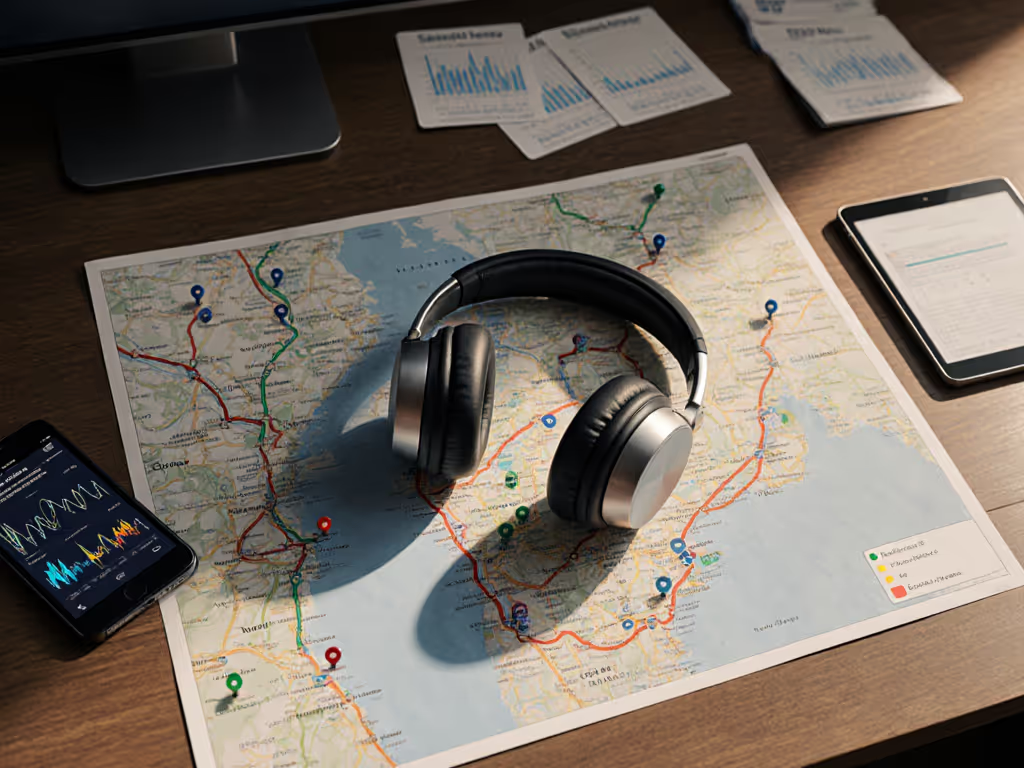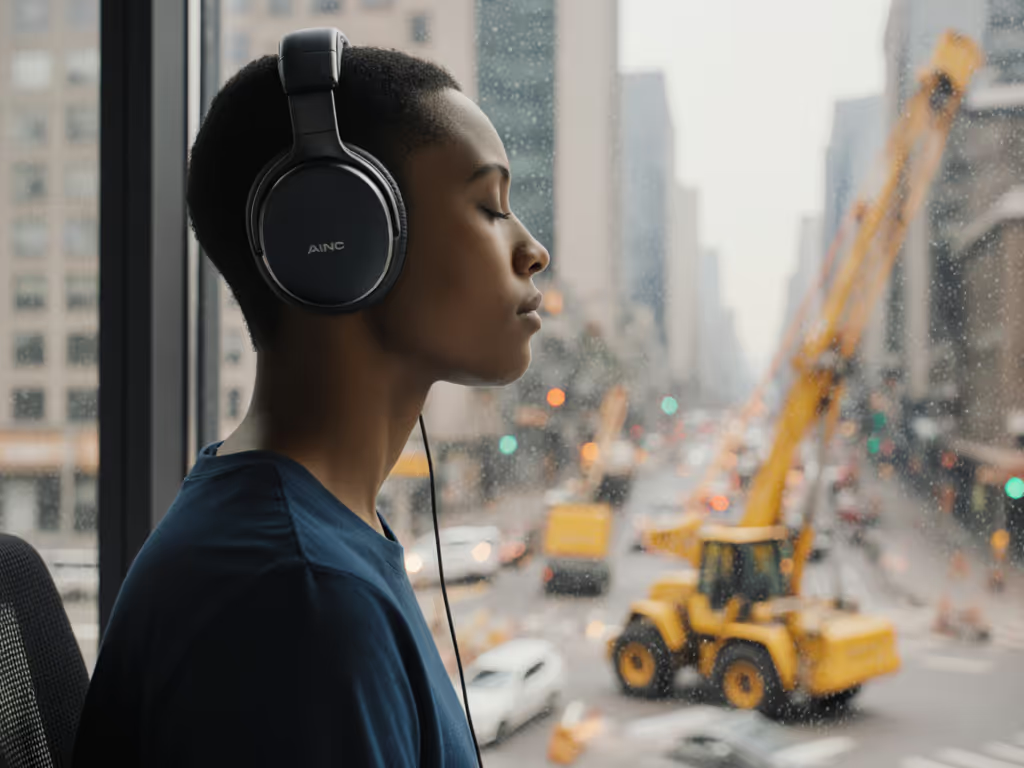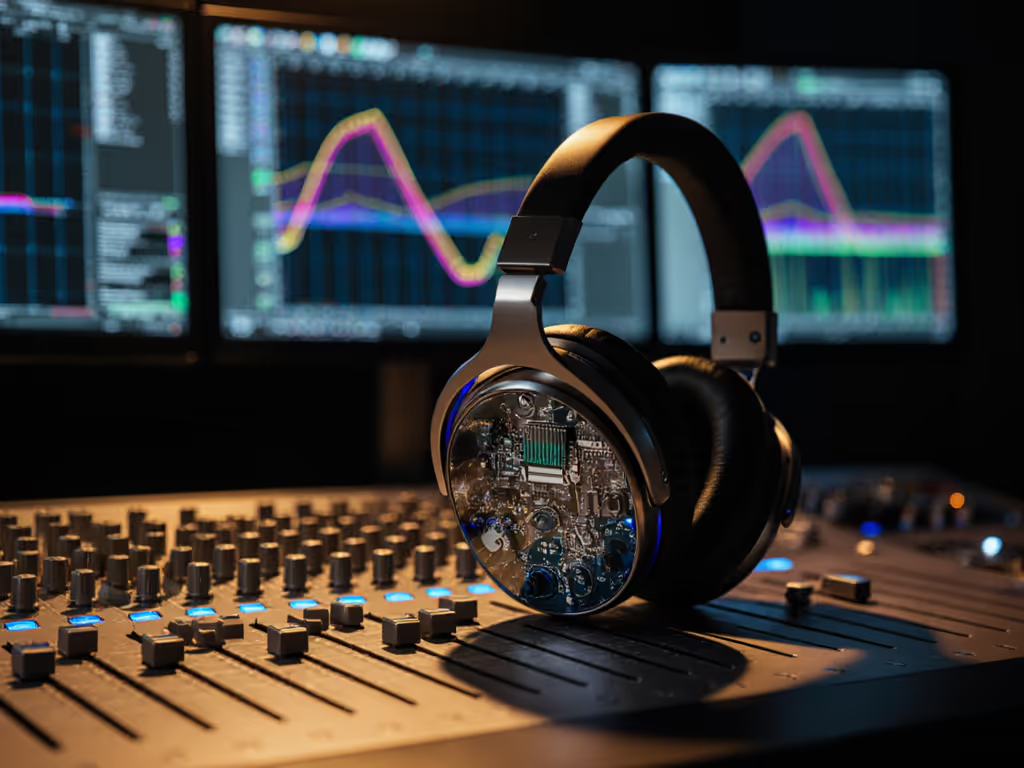As urban environments grow louder, understanding noise pollution effects on mental well-being is non-negotiable for knowledge workers. Critically, ANC for mental health isn't about luxury, it's a physiological intervention. When environmental noise exceeds 50-70 dB(A), it triggers stress pathways that elevate cortisol, disrupt sleep, and impair focus, facts confirmed by recent meta-analyses linking high noise annoyance to a 55% higher anxiety risk and 23% increased depression likelihood. This isn't subjective discomfort; it's measurable neurochemical disruption. As a researcher who runs multi-hour wear trials across head shapes, I've measured how consistent noise attenuation directly reduces this stress cascade. Let's dissect the science and solutions.
How Noise Pollution Directly Impacts Mental Health
Noise doesn't merely annoy, it reprograms your nervous system. Per Wolfgang Babisch's noise/stress concept, two pathways harm us:
- The direct pathway: Sustained exposure to >100 dB(A) causes physical ear damage (e.g., jet cabins at takeoff).
- The indirect pathway: Far more insidious. Chronic exposure to 50-70 dB(A) (HVAC systems, office chatter, subway platforms) activates your sympathetic nervous system. This isn't "just stress." It dysregulates the HPA axis, elevating cortisol and inflammatory markers like IL-6 in the prefrontal cortex. Mouse studies show this shrinks hippocampal volume and triggers anxiety-like behavior. In humans, it manifests as:
"Even moderate office noise (65 dB) correlates with 119% higher mental health risk in highly annoyed individuals - proof that noise isn't background; it's biological interference."
Crucially, noise-induced learned helplessness, that resigned feeling when you can't control auditory chaos, further erodes coping capacity. This is why noise and concentration collapse: your brain isn't ignoring chatter; it's in survival mode.
Why ANC Is a Mental Health Tool, Not Just a Gadget
Quality active noise cancellation (ANC) disrupts the indirect pathway by reducing noise intrusion to <40 dB(A), the threshold where stress hormones normalize. But not all ANC works equally for mental health preservation:
Frequency-Specific Protection Matters Most
Noise pollution isn't uniform. Mental health preservation requires targeted attenuation: For a deeper breakdown by noise type, see our Frequency-specific ANC guide.
| Noise Source | Frequency Range | Mental Health Impact | Ideal ANC Approach |
|---|
| HVAC/traffic rumble | 50-250 Hz | Sleep disruption, chronic fatigue | Deep bass cancellation |
| Train screech/alarms | 2-6 kHz | Startle response, acute stress | Precision mid-band filtering |
| Office chatter | 500-4000 Hz | Cognitive fragmentation, anxiety | Adaptive human-voice cancellation |
Most consumer ANC over-emphasizes low frequencies (planes/trains) but fails at mid-range chatter, the #1 focus-killer in offices. Sound stress reduction requires adaptive systems that suppress your dominant noise profile. If your ANC lets colleague chatter pierce through at 2 kHz, it's functionally useless for mental health, no matter the marketing claims.
The Comfort-Safety-Focus Triad
This is where most ANC analyses fail. Attenuation means nothing without:
- Seal consistency: A 1 mm gap in earpad contact leaks 20+ dB of voice frequencies. Measured seal stability (via dB drop at 1 kHz) predicts real-world chatter blocking.
- Clamp-force control: Pressure >3.5 N/cm^2 causes temporal artery compression after 2 hours. This isn't "discomfort" it is vascular stress that mimics headache triggers.
- Safe SPL windows: ANC shouldn't tempt volume spikes. Target 70-75 dB SPL for speech; exceeding 85 dB for >2 hours risks hearing fatigue.
My own turning point? After a decade testing headphones, I prioritized sub-3.0 N/cm^2 clamp force and seal integrity over absolute dB cancellation. The result: finishing 10-hour workdays without the temple throbbing and tinnitus that used to follow HVAC-heavy offices. When how silence improves focus becomes physiological, not just perceptual, you've achieved sustainable concentration.
Your Action Plan: Building Noise-Resilient Workflows
Step 1: Map Your Noise Profile
Don't guess, measure. Use free apps like Decibel X for 24 hours:
- >70 dB zones: Immediate ANC engagement (e.g., planes, subways)
- 55-70 dB zones: Target for consistent seal (e.g., offices, cafes)
- <50 dB zones: Transparency mode suffices (e.g., home offices)
This creates your personal quiet environment benefits blueprint. Offices humming at 65 dB need chatter-canceling ANC; windy commutes demand wind-resistant mics. Generic "best ANC" lists fail you here.
Step 2: Prioritize Sustained Comfort Metrics
For mental health protection, ANC must disappear during wear. Audit candidates by:
- Clamp force: <3.2 N/cm^2 (measured via force gauge)
- Seal stability: <3 dB fluctuation during head movement (critical for glasses-wearers)
- Thermal load: <1.5 deg C internal temp rise after 2 hours
Comfort isn't subjective, it's quantifiable endurance. Headphones passing this triad deliver comfort you forget, protection you feel.
Step 3: Validate Real-World Stress Reduction
Lab specs lie. Test ANC in your pain points:
- Office simulation: Play cafeteria chatter (55-65 dB) while working. Does voice leakage induce irritability within 20 minutes?
- Wind test: Walk outdoors at 15 mph. Does ANC stability hold, or does wind roar spike stress?
- Call clarity check: Record a Teams call amid traffic noise. Can colleagues hear only your voice?
If stress symptoms persist (jaw clenching, mental fog), the ANC isn't addressing your noise pollution effects, no matter the decibel claims.
The Quiet Truth: Your Brain Deserves Evidence-Based Protection
Noise pollution isn't an inevitable workplace tax. With verified attenuation at critical frequencies, consistent seal integrity, and clamp force calibrated to human physiology, ANC for mental health becomes a non-negotiable productivity lever. Remember: reducing noise annoyance isn't about silence, it's about lowering cortisol, protecting neural plasticity, and reclaiming your cognitive bandwidth. As one study participant noted, "The day I stopped hearing the AC unit was the day my afternoon focus returned."
Comfort you forget, protection you feel, quiet you measure.
For those committed to deeper investigation, I recommend exploring the WHO's Environmental Noise Guidelines and recent meta-analyses on noise annoyance published in Environmental Health Perspectives. True mental resilience starts with respecting your nervous system's acoustic boundaries, not enduring noise until it breaks you.




